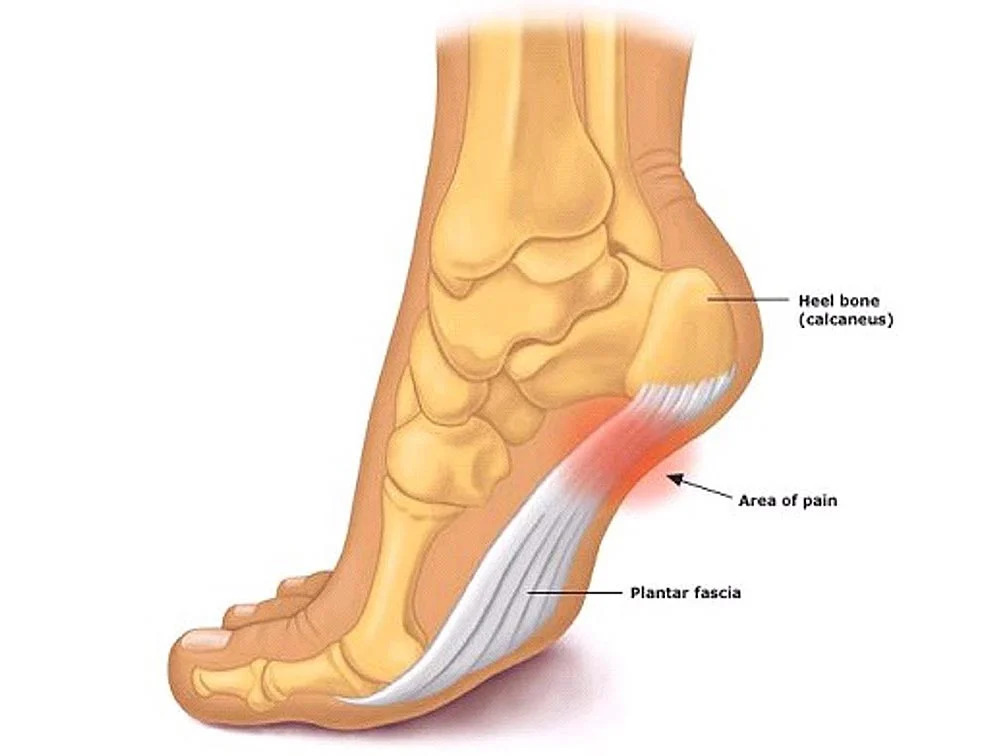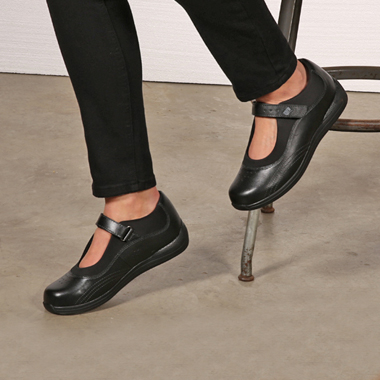Plantar Fasciitis Shoes & Facts | Drew Shoe
Learn More About Plantar Fasciitis Shoes
.jpg?v=0)
Did You Know?
Plantar fasciitis is one of the most common types of heel pain.
Nearly 10% of people will develop plantar fasciitis pain at some point in their life. That’s According to a study in 2013 published in Swiss Medical Weekly.
And you’re most likely to develop plantar fasciitis as you age. According to the Mayo Clinic, it’s most common in people ages 40-60.
Nearly 70% of plantar fasciitis sufferers are overweight. Not being able to get out and exercise because of pain only makes it harder to lose that weight. According to a study published by Dr. Rosenbaum in Medical Clinics of North America, a healthy weight = healthy feet.
Ignoring plantar fasciitis can result in chronic heel pain that hinders your regular activities. You're likely to change your walk to try to avoid the pain, which can lead to foot, knee, hip, or back problems.
What Is Plantar Fasciitis?
|
|
The plantar fascia supports the arch of your foot. It's designed to absorb massive amounts of stresses and the constant strains we place on our feet, but sometimes too much pressure damages or tears the tissues. Plantar Fasciitis (which can lead to heel spurs) is a persistent pain located on the bottom of the heel and the inside of the foot.
|
|
The plantar fascia is a fibrous, tendon-like structure that extends the entire length of the bottom of your foot, connecting your heel bone to your toes. During excessive activity, the plantar fascia can become irritated.
Repeated stretching and tearing of the plantar fascia causes inflammation which can lead to further pain and discomfort. |
|
Typically, as you get up and move around, the pain can subside, but it may return during long periods of standing or when you stand up after sitting for a while.
So, What Makes Footwear So Important?
A 1994 clinical study in Foot Ankle Int showed that Footwear is one of the most important aspects of supporting your heel and arch! Good plantar fasciitis footwear means better impact absorption, better cushioning, and less heel movement.
Stiff-soled shoes can stretch the plantar fascia tendon and over-worn shoes can cause your foot to pronate, both leading to damage of the ligaments and tendons in your feet.
When looking for plantar fasciitis shoes, you should look for a shoe that has good arch support and can accommodate prescribed orthotics, medial heel stabilizers that help control your gait, preventing pronation, a firm shank that protects you from hyper flexion, providing the protection you need, and a proper fit that provides room for your toes to help relieve stress.
How Can Drew Help?
Drew keeps all of this in mind when designing shoes.Drew footwear has superior insoles that support the arch and reduce tension on the tendon. Each pair has extra room for orthotics, which are commonly prescribed to help alleviate the pain and tension of plantar fasciitis. Our steel or nylon shanks protect from hyperflexion. And extended medial stabilizers in the heel provide needed support and stability. |
Choosing The Right Shoes
Plantar fasciitis isn’t easy if you don’t have the right shoes. The wrong type of shoe can cause extra stress on your plantar fascia, leading to further injury and discomfort. It’s important to make sure your shoes are comfortable, that they fit right, and they have appropriate heel and arch supports.
That’s why Drew carries a huge variety of sizes, widths, and lasts with features designed for comfort, so anyone can stay on their feet in comfort. Even you!.png?v=0)



.jpg?v=0)

.jpg?v=0)
